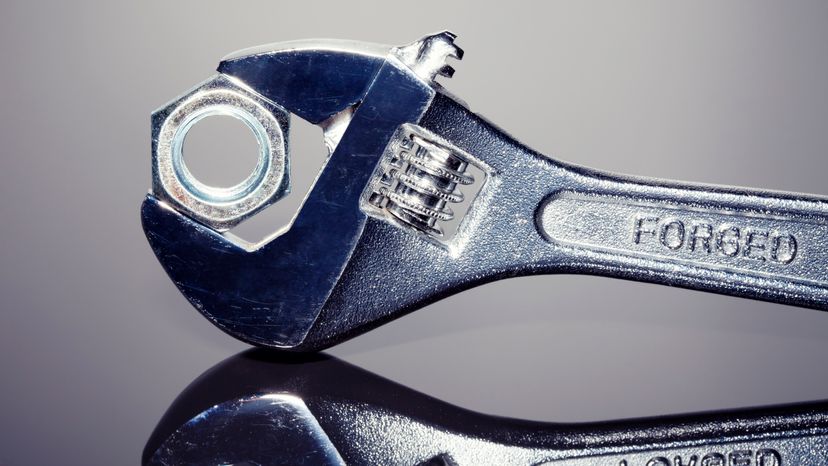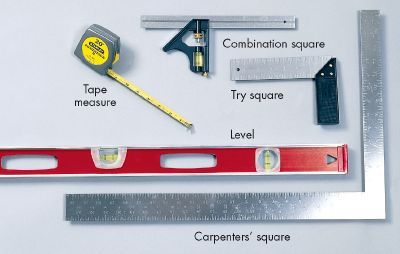Here are some of the different types of wrenches from which you can choose:
Box End
A box end wrench (or closed) is used where there is room to place the wrench mouth around the fastener. Box end wrenches are available in 6- and 12-point versions to match the number of sides on the fastener. Hexagon fasteners have 6 sides, or points, and are the most popular.
Open end
This type of wrench is used for turning fasteners in locations where a box end wrench cannot encompass the fastener. It's can also help loosen fasteners.
Combination
A combination wrench is a versatile tool that masterfully combines two types of wrenches into one. On one side, it features a box-end, a closed loop that expertly grips hexagonal or square nuts, ideal for those tough-to-loosen nuts. On the flip side, it has an open-end, a U-shaped design, perfect for swiftly unscrewing the nut once it's loosened [source: Tameson].
The dual functionality of a combination wrench makes it a go-to for many DIY enthusiasts and professionals. Available in both metric and standard sizes, combination wrenches cater to a wide range of bolt dimensions.
Adjustable Wrench
An adjustable wrench is also sometimes called a crescent wrench. Adjustable wrenches can be used on a variety of fastener sizes. The disadvantage is that it is less stable than a fixed-size wrench and can easily injure you or damage the fastener.
An adjustable wrench should be used only if the correct size wrench is not available.
Torque Wrench
A torque wrench is a precise tool for controlling the force on a bolt, preventing over- or under-tightening, crucial for sensitive tasks like engine work. Similar to a socket wrench, torque wrenches have a head, adjustable socket, rotating handle with measurement marks, and a locking nut at the bottom.
To use a torque wrench, loosen the bottom nut, adjust the handle to the needed torque level (in lb-ft, lb-in, or Nm), then attach the socket and turn to tighten or loosen the bolt. The wrench signals when reaching the set torque. Always reset it to the lowest setting after use for accuracy [source: SkillCat].
Socket Wrench
A socket wrench, also known as a ratchet wrench, is a must-have tool for turning fasteners with precision and ease. Socket wrenches fit over the fastener, making removal easier and safer than with other wrenches.
The magic of a socket wrench lies in its ratcheting system attached to the handle. This clever design allows you to tighten or loosen nuts and bolts by simply pushing or pulling the handle, without needing to remove and reposition the wrench after each turn.
It’s especially handy in tight spaces where movement is limited. Sockets come in standard and extended depth; extensions are available to make removing fasteners easier [source: Lowell Corporation].
Pipe Wrench
The pipe wrench, ideal for soft piping such as black pipe, is a key tool with an adjustable jaw and sharp teeth for a strong grip on various pipe sizes. It comprises a handle, adjustable nut, fixed jaw, and adjustable jaw.
Use it by holding the end of the handle for leverage and adjusting the nut to fit pipe sizes—clockwise for smaller and counterclockwise for larger pipes. The adjustable jaw on pipe wrenches moves up and down for easy positioning. Longer than other wrenches, the pipe wrench provides extra leverage and grip, perfect for securing or loosening pipes effectively [source: SkillCat].
Allen Wrench
The Allen wrench is an L-shaped wrench that is easily recognizable by its hexagonal head, designed to fit into bolts with hexagon-shaped sockets. An Allen Wrench stands out for its two hexagonal ends, each offering distinct advantages.
When you insert the wrench vertically into a bolt, you'll have less leverage, making it slightly harder to turn but easier to reach tight spots. However, for really stubborn bolts, use the wrench at a 90-degree angle to the nut. This position gives you more leverage, making it much easier to loosen tight bolts. Remember, the longer side of the wrench provides more leverage [source: SkillCat].
Strap Wrench
The strap wrench is a unique and versatile tool, perfect for gripping and turning objects without causing damage. Unlike traditional wrenches, it uses a strap, usually made of rubber, to create friction and securely hold objects. This design ensures that delicate surfaces stay scratch-free, making it ideal for sensitive materials.
Most strap wrenches come with handles for a sturdy grip, but some are made to attach to the square drive of ratchet wrenches. Its adaptability to any size makes it not only useful for professional tasks but also handy for everyday household chores, like opening tight jar lids [source: Tameson].
Pedal Wrench
The pedal wrench is a specialized tool designed for cyclists and bike mechanics. This type of wrench is used specifically for attaching or removing the pedals from a bicycle. What sets the pedal wrench apart is its thin profile, which allows it to slide easily between the pedal and the crank arm, where space is often tight.
Usually, one end of the pedal wrench is angled, providing extra leverage to loosen or tighten the pedals effectively. The other end is typically flat, making it convenient to use in different positions [source: Wikibooks].

